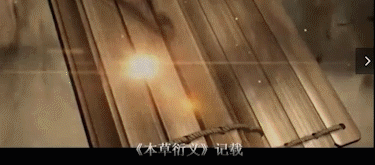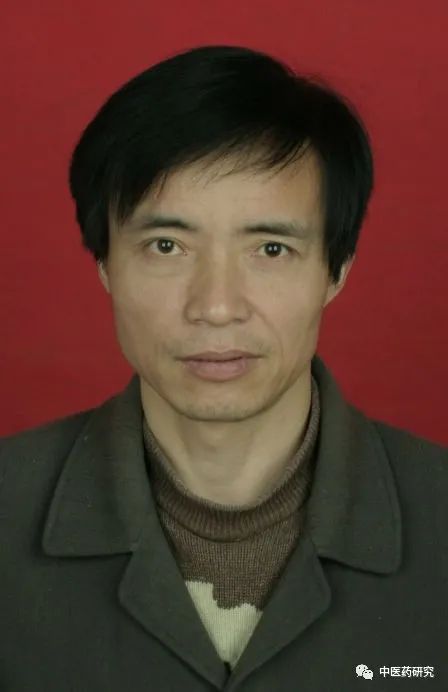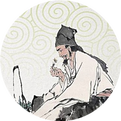
The common cold is characterized by fever, chills, body aches, nasal congestion, sneezing, throat irritation, and cough. The term “common cold” first appeared in the book “Ren Zhai Zhi Zhi Fang – Various Winds”: “Shen Su Decoction treats the common cold caused by wind evil, with fever, headache, heavy cough, and thick nasal discharge.”
【Etiology and Pathogenesis】
Traditional medicine believes that the common cold and influenza, as viral upper respiratory infections, belong to the categories of “exterior syndrome” and “exogenous heat syndrome” in Chinese medicine. The pathogenic evil invades the human body, starting from the lung’s defensive Qi (wei qi); wind evil often enters through the mouth and nose, while wind-cold evil typically enters through the skin and hair. There are two main understandings: “Shang Han Lun” (Treatise on Cold Damage) and “Wen Bing Lun” (Treatise on Warm Diseases). In the early stages, the disease is located at the exterior (lung wei), according to “Shang Han” (six channels), it belongs to the Taiyang channel’s exterior syndrome (exterior heat); according to “Wen Bing”, (wei, qi, ying, xue, san jiao), the wei level corresponds to the body’s muscle surface, skin, upper respiratory tract, and head, hence termed “warm evil affecting the exterior” or “wei level heat syndrome”.
This is the initial stage of warm disease, also equivalent to the “exterior heat” of “Shang Han”. The Taiyang channel’s defensive Qi is obstructed, and the wei yang Qi cannot circulate outward, leading to symptoms such as chills, fever, nasal congestion, runny nose, throat pain, and cough, which are signs of lung wei. If the Taiyang meridian is obstructed, it results in headache, body heaviness, and joint pain. The lung governs the skin and hair, and when the lung is invaded by external evil, the airways are obstructed; if lung Qi rebels, it leads to coughing; if the evil forces the fluids out, it results in a runny nose. The throat, belonging to the lung system, becomes itchy when affected by wind-cold and painful when heat is stagnant. If the righteous Qi cannot overcome the evil, it invades the chest and diaphragm, leading to what is termed “qi level heat syndrome”, which is also equivalent to the Yangming channel’s organ syndrome and interior syndrome.
The cause of this disease is the invasion of wind evil; once the wind evil attacks, regardless of where it enters, it must return to the lung (“Zai Bing Yuan Liu Xi Zhu – Source of Common Cold”). Wind is light and rises, thus “those harmed by wind are first affected at the upper part”. The wind evil invades the human body, first entering the lung wei. If the body is weak, the evil gathers: “where the evil gathers, the Qi must be deficient”. If the original Qi is weak, the exterior is loose, and any slight carelessness can lead to the invasion of wind evil. There may also be dietary strain or fatigue harming the spleen and stomach, resulting in spleen and lung Qi deficiency; if the middle is deficient and the wei is weak, it cannot transport essence to the lung, leading to lung Qi deficiency, which cannot transport essence to the skin and hair, resulting in an unstable exterior and loose pores, making it easy to contract wind evil and develop the disease. Additionally, there may be a history of Yang deficiency, Yin deficiency, or improper postpartum care leading to Yin and blood deficiency, which can also result in the invasion of external evil and disease onset.
Modern medicine believes that the primary pathogen of the common cold is the rhinovirus, which belongs to the Picornaviridae family and has a diameter of about 15-30 nm, consisting of non-enveloped icosahedral particles. It has a protein shell composed of four types of polypeptides: VP1, VP2, VP3, and VP4, with a core of single-stranded linear RNA encoding approximately 7500 nucleotides. Over 120 serotypes of human rhinovirus have been identified, and certain animal rhinoviruses can also infect humans. Approximately 20%-50% of adult colds are caused by rhinoviruses.
In addition to rhinoviruses, human coronaviruses, respiratory syncytial virus (RSV), parainfluenza virus, and adenoviruses are also common pathogens of the common cold. Coronaviruses, RSV, and parainfluenza viruses are enveloped RNA viruses, with coronaviruses and RSV having only one serotype; parainfluenza viruses have types 1, 2, 3, and 4, with about 20%-30% of common colds caused by these viruses, occurring in all seasons, with a higher incidence in autumn and winter. The virus invades the upper respiratory tract mucosa, binds to cell surface receptors, and enters the cells, proliferating in the epithelial cells of the mucosa and surrounding lymphatic tissues, causing disease.
Generally, the site of viral invasion is also the site of disease, with most cases showing no viremia, hence termed “superficial infection”. However, the toxins produced have widespread effects on the body’s organs. The virus proliferates and spreads within the upper respiratory tract mucosal cells, leading to mucosal congestion, edema, and inflammatory cell infiltration, increased mucus secretion, epithelial cell necrosis, and ciliary movement impairment. These lesions are generally limited to the upper respiratory tract. In rare cases, they may extend to the lower respiratory tract, causing hemorrhagic necrosis and shedding of epithelial cells in the bronchioles and alveoli, as well as interstitial edema and inflammatory cell infiltration in the lungs. The destruction of respiratory epithelial cells also reduces resistance to secondary bacterial infections, making it easier to develop bacterial infections.
【TCM Diagnosis】
Exogenous diseases can be divided into cold damage and warm diseases, with cold damage more common in northern cold regions and warm diseases more prevalent in southern humid and warm regions.
1. Wind-cold type: Wind evil binds the exterior, with fever, sweating, aversion to wind, and a slow pulse. 2. Cold damage type: Cold evil binds the exterior, with or without fever, but with aversion to cold, body aches, vomiting, and a tight pulse.
3. Wind-heat type: Wind attacks the exterior, with heavy fever and light aversion to cold, headache, sweating, thirst, dry and painful throat, short and red urine, thin yellow tongue coating, and floating rapid pulse.
4. Wind-cold type: Wind-cold attacks the exterior, with heavy aversion to cold and light fever, significant body aches, headache, no sweating, nasal congestion, runny nose, itchy throat, cough, thin phlegm, aching limbs, thin white and moist tongue coating, and floating pulse.
5. Mixed syndromes (1) Dampness: Body heat not rising, dizziness, heavy limbs, joint pain, white greasy tongue coating, and wiry slippery pulse.
(2) Summer heat: In addition to wind-heat and dampness symptoms, there may be sweating but body heat does not resolve, irritability, red urine, yellow greasy tongue coating, and slippery rapid pulse.
(3) Dryness: In addition to wind-heat symptoms, there may be dry nose, cracked lips, mouth sores, or dry cough without phlegm, red tongue with little coating, and thin rapid pulse.
【Differentiation and Treatment】
⒈ Wind evil binding the exterior syndrome, with fever, sweating, aversion to wind, and a slow pulse. Use warming and dispersing herbs. Modify Gui Zhi Tang (Cinnamon Twig Decoction).
⒉ Cold evil binding the exterior syndrome, with or without fever, but with aversion to cold, body aches, vomiting, and a tight pulse. Use warming and dispersing herbs. Modify Ma Huang Tang (Ephedra Decoction).
⒊ Cold damage attacking the Yin syndrome, with initial fever and a deep pulse, significant aversion to cold. Use Tai Shao Liang Gan Tang (Minor Bupleurum Decoction) in the early stage with exterior symptoms and fever, and later use Si Ni Tang (Frigid Extremities Decoction) if there are interior symptoms. In the mid-stage, if there are no interior symptoms and no fever, use Ma Huang Gan Cao Tang (Ephedra and Licorice Decoction). [Wind-heat attacking the exterior] Wei is lost, with heavy fever, light aversion to cold, sweating or no sweating, headache, nasal congestion with thick discharge, cough, red throat, or irritability and thirst, red tongue tip with little fluid, thin yellow tongue coating, and floating rapid pulse.
[Method of treatment] Use cooling and light dispersing herbs to disperse wind and clear heat. [Formula] Modify Yin Qiao San (Honeysuckle and Forsythia Powder). If there is only cough, mild body heat, slight thirst, thin white tongue coating, and floating pulse, it indicates lung failure to disperse and descend, use Sang Ju Yin (Mulberry Leaf and Chrysanthemum Decoction) with modifications. ⒌ Wind-cold attacking the exterior syndrome: Light fever, heavy aversion to cold, no sweating, nasal congestion, runny nose, sneezing, cough, body aches, headache, thin white tongue coating, and floating tight pulse. Use warming and dispersing herbs. Modify Jing Fang Bai Du San (Schizonepeta and Saposhnikovia Powder).
⒍ Summer dampness attacking the exterior syndrome: Seen in summer, with dizziness, nasal congestion, runny nose, aversion to cold and fever, or heat not rising, no sweating or little sweating, chest tightness and nausea, thin greasy tongue coating, and slippery rapid pulse. Use herbs to dispel summer heat and release the exterior. Modify Xin Jia Xiang Ru Yin (Newly Added Elsholtzia Decoction) with Hou Po (Magnolia Bark), Huang Lian (Coptis), etc.
⒎ Cool dryness invading the exterior syndrome: Aversion to cold with slight fever, body aches, cough without phlegm, dry nose with little discharge, dry mouth and itchy throat, thin white tongue coating with little fluid, and floating pulse. Use light dispersing herbs for cool dryness. Modify Xing Su San (Apricot and Perilla Leaf Powder).
⒏ Warm dryness invading the exterior syndrome: Slight fever with aversion to wind and cold, body aches, dry cough without phlegm, dry nose and lips, dry mouth and itchy throat, thin yellow tongue coating with little fluid, and floating rapid pulse. Use herbs to clear and disperse warm dryness. Modify Sang Xing Tang (Mulberry and Apricot Decoction). 【Chinese Herbal Formulas】 1. Fresh scallion whites (5 segments) and fresh ginger (5 slices), decoct in water for consumption. 2. Tong Xuan Li Fei Wan: Take 1-2 pills, twice daily. 3. Gan Mao Qing Re Chong Ji: Take 1-2 packets, twice daily. (The above are suitable for various types of colds or early-stage influenza)
4. Huo Xiang Zheng Qi Wan (water pills), take 6g, or Huo Xiang Zheng Qi Shui, take 10-20ml, twice to thrice daily. (Suitable for summer dampness type exogenous diseases) 5. Other formulas include Ban Lan Gen Chong Ji, Zhong Gan Ling, etc.
【Other Therapies】
Acupuncture therapy: Main points include Feng Chi (GB20), Da Zhui (DU14), Qu Chi (LI11), and auxiliary points include Ying Xiang (LI20), Feng Long (ST40), Tian Tu (Ren22), and Fei Yu (LU9). Select 1-2 main points and 2 auxiliary points for moderate stimulation, 1-2 times per day.
【Prevention and Health Care】
During outbreaks, air disinfection or enhanced ventilation can be conducted, and morning checks in nurseries and kindergartens can help early detection of sick children. Appropriate isolation should be implemented to prevent disease spread. In the recovery phase, if there are symptoms of stomach heat, with yellow thick tongue coating, bamboo leaf and gypsum decoction can be selected for prognosis; if the main manifestation is injury to fluids, use Sha Shen Mai Dong Tang (Glehnia and Ophiopogon Decoction) for treatment.

Yao Dapeng, born in 1960, known as a unique figure in the poetry circle, graduated from Sichuan University with a degree in adult education and pharmacy, currently a senior TCM physician, senior Chinese herbalist, senior psychological counselor, senior acupuncturist, editor of the new poetry research section of the Chinese Poetry Forum, editor of the original section of the Chinese School of Poetry Network, and chief editor of the Global Ecological Poetry Journal public account. He has experienced many hardships in life, with no stable job or income, relying on decades of self-study in traditional Chinese medicine theory, creating a forum for traditional Chinese medicine for the disabled, and practicing the therapeutic effects of ancient walking poetry writing methods. He has walked through Tibet’s Motuo County, 50,000 kilometers of coastline, the Red Army’s 25,000-mile Long March, the ecological protection road along the Yangtze River, and the ecological protection road along the Yellow River, covering over 2,000 towns in more than half of China during 20 years of walking, with a total walking distance of over 116,000 kilometers. He has also created an ecological protection forum, writing nearly ten thousand poems along the way, publishing thousands, not only curing his own mental illness but also curing lung cancer and hepatitis B, which had been diagnosed by hospitals as terminal. He has also self-studied and obtained multiple university degrees. He possesses skills in acupuncture, tuina, TCM physiotherapy, poetry creation, calligraphy, and photography, with a unique understanding and achievements in poetry creation and psychological suggestion and hypnosis therapy over the years. His works have been nominated for the 9th Literary Mountain Flower Award by the China Folk Literature and Art Association and received the Lu Xun Literary Honor Award from the Chinese Writers Association. He has also received the Achievement Award from the China Arts and Crafts Association and the title of Master of Folk Arts and Crafts awarded by UNESCO. He is currently an art consultant for the China-UK Art Foundation, a fellow of the Royal Academy of Arts, a visiting professor, and an honorary Doctor of Arts. He is a member of the China Folk Literature and Art Association, a member of the Chinese Psychological Society, a member of the Chinese Medicine Association, a director of the Chinese Hard Pen Calligraphy Association, a member of the Chinese Writers Association’s Reportage Society, a member of the Chinese Prose Society, a member of the Chinese Poetry Society, and a member of the Jiangsu Province Calligraphy Association. He is a unique figure in contemporary poetry and a well-known folk poet, with his biography included in various “Famous People Records of China, the UK, and the USA”. He has participated in numerous provincial and national art expos, held personal bonsai exhibitions in Beijing and other places, and participated in national calligraphy and painting exhibitions multiple times. His works have been collected by the China Cultural Relics and Ancient Architecture Foundation, the National Olympic Committee, the Ministry of Civil Affairs for Emergency Rescue, the China Children and Youth Foundation, and various media and art galleries, including the Beijing Evening News, People’s Daily, and many others, with a focus on carving figures and Buddhist statues. He has been received by many prominent figures and art galleries in China.
Requirements for Works
1. Follow strict manuscript submission rules,no spaces in the text and ensure the title and body are consistent.
For example: Traditional Chinese Medicine
Ensure the topic is well understood.
3. Do not submit mediocre works.
4. Any works seen elsewhere before being displayed on the platform will be completely disregarded.
5. Submitted works must be original; previously published works on public accounts should not be submitted.
6. For group submissions, please attach a personal profile with the finalized work and send it to the group. Accept submissions via email.
7. All rewards for this submission are not
focused on quality, pursuing nature, and enjoying tranquility are voluntary and moderate.
8. If there are sponsorship activities, please contact the editor: yao196036 email: [email protected]
The platform has the right to directly select and include works.
Advisors: Wang Qi, Tang Zuxuan Zhang Daning Chen Jiaqing
Editor-in-Chief: Yao Dapeng
Deputy Editor-in-Chief: Ma Youdu, Wang Weiyi
Editors: Wang Yunming Xu Weilin Qiu Liansong Wang Zhenggong Ma Youdu

QR code for TCM Research public account

